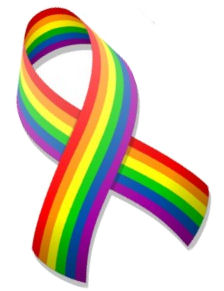Below is a guest post written by Paula Teander (@Sober_Sociology) from Wake Technical Community College.

“Why do you think the number of women having babies outside of marriage has increased?” I asked my Sociology of Family class. Knowing that students often blame pesky teenagers for these increases, I set the trap and waited for the first one to take the bait. The students were surprised that only 7.7% of out-of wedlock births (in 2008) occurred to girls under age 18. Then I brought up that non-marital births were actually higher in Scandinavian countries. “Is that because they’re all cold countries?” asked a particularly adept student. “What an excellent observation,” I said seeing a golden opportunity to point out the difference between correlation and causation.
In my excitement to draw the connection to causation I quickly said, “Did you know that ice cream sales and the incidents of rape are positively correlated.” A stunned silence came over the class; I thought they were mesmerized by my counter-intuitive gem. I went on, “It’s true, as ice cream sales go up more people are raped.” I went up to the whiteboard and drew out the relationship on a xy graph. I spent the next few minutes describing what a spurious correlation was, and how in this particular example it was the heat of summer affecting the increase in both.
It was at this point several students got up and walked out of class.
My face warmed and I could feel the blood surge through my veins as my heart raced. I quickly reviewed in my mind the last few things I had said. I couldn’t quite wrap my mind around what had just happened. I thought to myself, “why would they just get up and leave?”. I had a sinking feeling in my gut. I was confused, shocked, taken-aback, and anxious. All of these emotions engulfed me as I stood before my students.
Shortly after class I found that it was my discussion of rape and ice cream sales that inspired the students to walkout. . I spent the whole weekend thinking about what I did wrong, and what I could’ve done better. I was heart-broken, as the very last thing I wanted to do was alienate my students. I sent an email to the class explaining how teaching is a two-way street and that our classroom was a learning environment for everyone, careful to include myself.
Communication errors, which often result in hurt feelings, can occur for a number of reasons. Sometimes students’ stop listening and hear only pieces of what we are saying. Other times the timing and delivery of what we say is horribly “off.” Performers and comedians make their living off of delivery and timing, not a small thing—especially in the classroom.
Because I’d been using the ice-cream/rape example for years in my classes (sans walkouts), I suspected that timing and delivery played some part in the walkouts. My students were simply not ready for a methodological discussion at that exact moment, and my poorly timed example literally came out of left-field to many of them. But after discussing this matter with a former student of mine, I couldn’t help but take something else from this experience.
My former student admitted to me that she remembered the ice-cream/rape example very well. She also told me that she had heard the same example used in her Psychology class. I asked her if she could remember her initial reaction, and she told me “I first thought it ridiculous that someone would bring this kind of example up in a classroom!” She also confided that she had had a painful experience in her past, one involving sexual abuse. I began to question just how many other students had felt this way throughout the years. Although this particular student was eventually able to wrap her head around the concept, and even now agrees that it is a great way to illustrate correlation and not causation, it made me question the value of using an example that could trigger such a response.
I’m sure most of us use Trigger-warnings in our classes, although we may not actually call them that. If you show a video with graphic scenes, violent content, profanity, or sensitive topics, it’s probably always a good idea to warn the students about this in advance. A trigger warning is basically anything that lets your students know that the up-coming content could “trigger” an emotional/physical response, or maybe that the subject matter might make them feel a bit uncomfortable (not necessarily a bad thing in a learning environment, and certainly a hard thing to escape in a Sociology class). Anyone who reads feminist blogs has come across “trigger warnings” before graphic images or descriptions of rape or violence to women. I recently read that being triggered is like having an allergic reaction, or “an involuntary reaction to a substance which can vary from severe discomfort to serious debilitation and endangerment.”
I learned quite a bit from this classroom experience, and learning isn’t always a bed of roses. I’m still debating whether I’ll ever use the ice-cream/rape example in my classes again, but when/if I do I will make sure that the timing and delivery is right. Knowing that the word (rape) itself can trigger painful memories for some students, memories so vivid that they literally feel their heart-rate increase, they struggle to think or breathe, gives me pause. If I choose to use it, I will most certainly give the class a “heads-up” by saying something like “I’m about to give you an example that involves the word “rape,” but it is in no way meant to scoff at, or downplay the seriousness of rape—rather, it is being used to make us think critically about causation.”


